Yeonpo Galbi (연포갈비)
2021-02-24
56-1, Jeongjo-ro 906beon-gil, Paldal-gu, Suwon-si, Gyeonggi-do
+82-31-255-1337
Located near Hwahongmun Gate, one the Eight Sights of Suwon, Yeonpo Galbi is the perfect place to stop by for a rest and to eat some authentic Suwon galbi (ribs) while touring the area. With rustic logs on the exterior and a bright, clean interior, the restaurant seeks to capture the local spirit of the neighborhood and aesthetically complement the nearby Hwahongmun Gate. As far as for the food, each dish is designated to be prepared by a specific assistant cook for a consistent taste.
Ttungbo Halmae Gimbap (뚱보할매김밥)
2019-09-24
325, Tongyeonghaean-ro, Tongyeong-si, Gyeongsangnam-do
+82-55-645-2619
Ttungbo Halmae Gimbap is one of the most sought-out restaurants selling Chungmu gimbap, a simple take on gimbap with just rice filling the laver. Although small and simple, this local speciality tastes great, especially with radish kimchi and spicy squid, and is one of the main reasons that visitors come to Tongyeong.
Gohyang Iyagi (고향이야기)
2019-05-15
9, Nunmaeul-gil, Pyeongchang-gun, Gangwon-do
82-33-335-5430
The restaurant opened in 1999 with 76 seats, but after it was remodeled in 2008, the number of seats was increased to 126, among which 40 are Western style seating to accommodate the needs of international guests and elderly people.
The interior is decorated with photos taken by the restaurant owner to add to the unique atmosphere. The owner turned the traditional Korean dish of gondeurebap (steamed rice with seasoned cirsium) into something new, serving it in a dolsot (hot stone bowl). The restaurant serves more than 20 different types of side dishes to satisfy customers' various tastes.
Deungbul Garden (등불가든)
2025-05-15
23 Powolladeul-gil, Yangyang-eup, Yangyang-gun, Gangwon-do
Choedaegamne (최대감네)
2020-06-01
12-3, Insadong 8-gil, Jongno-gu, Seoul
+82-2-733-9355
Choedaegamne is a traditional restaurant with a cozy garden and a pond. It is located at the end of the alley next to Inside Plaza. At this famous restaurant located in Insa-dong, a traditional interior is enhanced by the date trees planted in between tables. Various dishes are available such as Ssambapjeongshik with organic vegetables, beef shabu shabu using beef stock and fresh tender galbi (ribs) which are purchased daily.
Hwanggeumteo Sutbul Garden (황금터숯불촌)
2009-11-12
Kwaebin-1(il)ri 351-7, Goryeong-eup, Goryeong-gun, Gyeongsanbuk-do.
At an accessible location in Goryeong, an old capital city of the Gaya Kingdom,
Hwanggeumteo Sutbul Garden with its spacey parking lot is the best spot to stop by and relax after touring the ruins of the Gaya Kingdom.
You can savor some quality meat provided at Hwanggeumteo Sutbul Garden where the wooden architecture with big and tall windows will create an awesome atmosphere to dine.
It is a cozy family operated restaurant where you must stop by.
Seonsan Goeul (선산고을)
2016-09-05
Sinsi-ro 16(sipyuk)-gil 83, Gumi-si, Gyeongsangbuk-do.
You will find this cozy place with great landscaping in the heart of Gumi right across from Gumi Culture and Arts Center.
As you walk in, a neatly uniformed staff will greet you at the door and soon you will notice this two-story building decorated in a neo-Japanese style.
Seonsan Goeul specialized only in ‘Galbisal’ (grilled ribs), and you won’t find their heavenly match-made mushroom and ribs combination anywhere else. Also, many foreign visitors stop by because their side dishes are not so hot and made with fresh ingredients.
An outstanding place with an awesome service staff and facilities.
Borichon (보리촌)
2016-09-05
Samhyeon-ro 53-107, Gwacheon-si, Gyeonggi-do.
You will find a dining pleasure at the foot of beautiful Mt. Gwanaksan where a traditional Korean style, peaceful-looking, two-story building attracts many worn-out urbanites.
Borichon not only provides a traditional barley meal, but also offers the chance to get away from the hectic city life and enjoy the tranquility of nature.
In Korean history, the peasants during the Joseon dynasty only had barley to eat during spring when rice was scarce.
Borichon invites guests to reminiscence of the past and experience Korean history, culture and nature.
Odaesan Gagneun Gil (오대산가는길)
2016-09-05
Jingogae-ro 118-15, Jinbu-myeon, Pyeongchang-gun, Gangwon-do.
Located in front of Mt. Odaesan next to the Hotel Odaesan, you will find this restaurant Odaesan Gagneun Gil which has a beautiful flower garden.
In the backyard, you will find the tall fir trees surrounding the restaurant.
Once you walk inside the restaurant, you will find famous paintings by Kim Hong-Do and ceilings covered with the Korean traditional kites.
Of course, the meals served are first-rate and the restaurant also offers accommodations, thus making it an excellent place for a romantic weekend getaway.
Overall a superb restaurant.
Dongho Hoegwan (동호회관)
2016-09-05
Angol-ro 3, Ganghyeon-myeon, Yangyang-gun, Gangwon-do.
Located near Naksansa Temple, Dongho Hoegwan is the place where you can view a vast cornfield and majestic Mt. Seoraksan.
It has been in business for over 20 years and the staff is quite friendly and welcoming.
The house special ‘dolsotbap’ (nutritious rice cooked in a stone pot) is prepared with the pure mineral water from the Oseakyaksu Springs so the rice is green when it is served.
A variety of wild green salads are offered as side dishes as well as ‘ojingeo hoe muchim’ (uncooked squid salad).In the summer, the second floor is offered for accommodation.
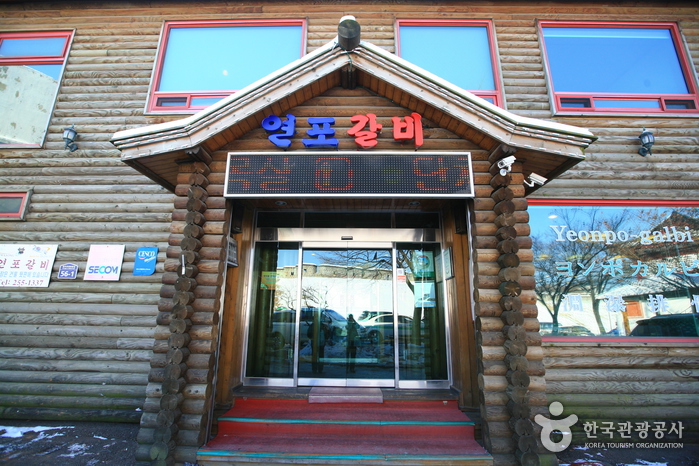
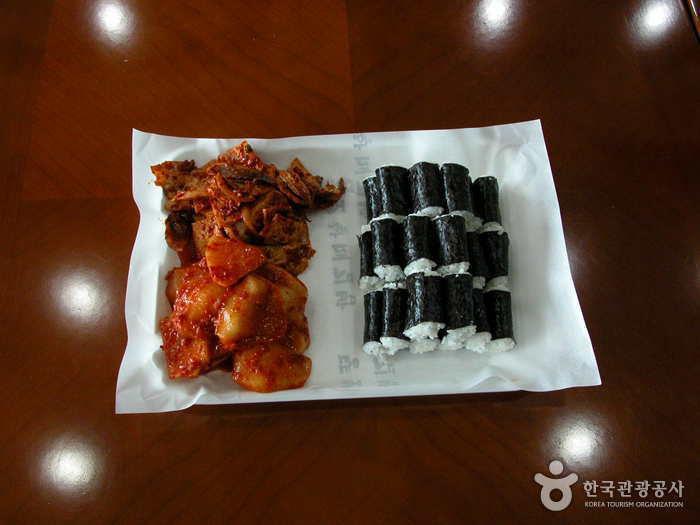
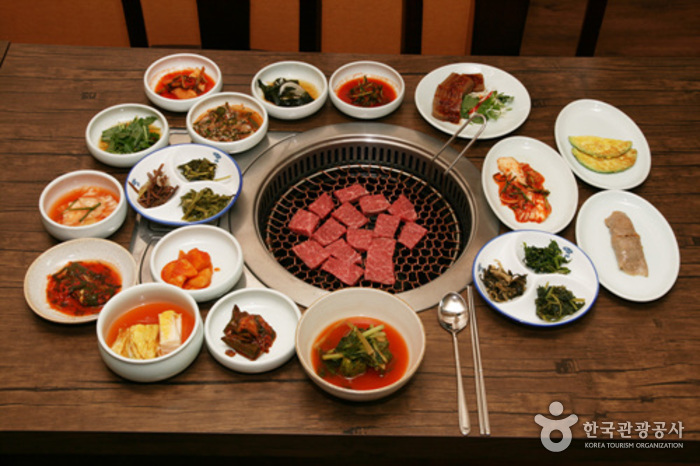
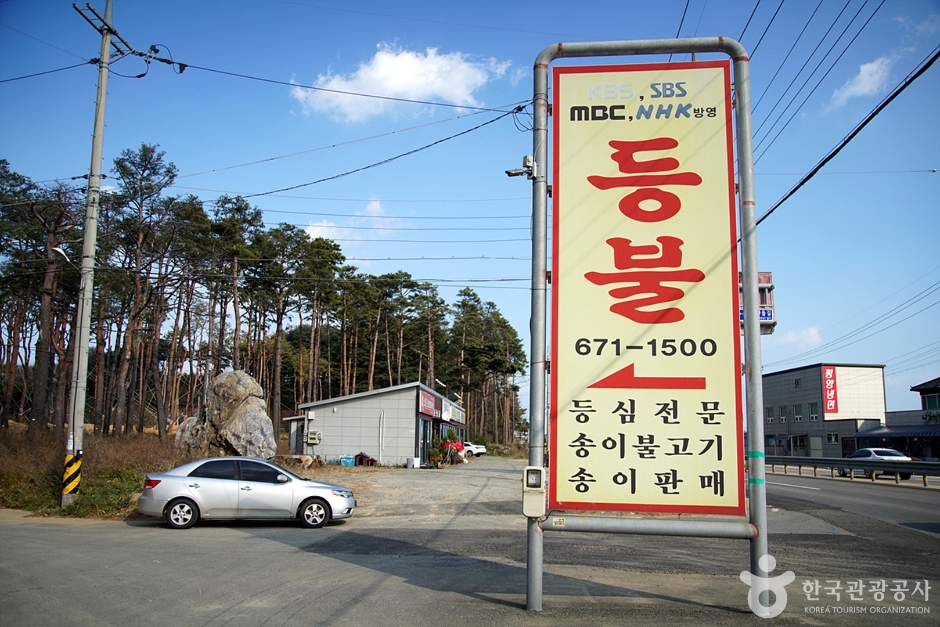
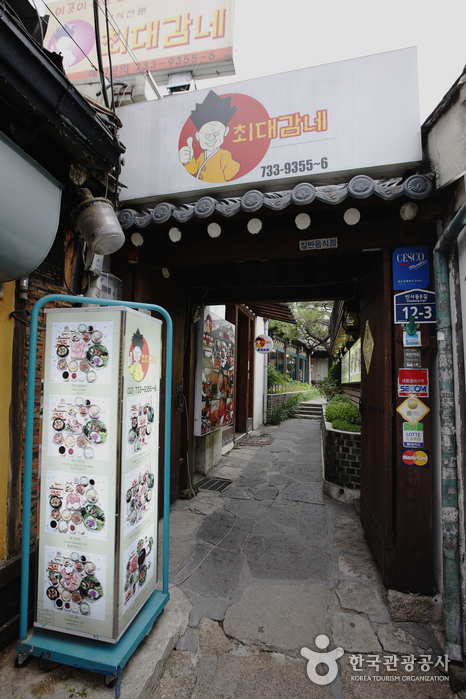

 Español
Español
 한국어
한국어 English
English 日本語
日本語 中文(简体)
中文(简体) Deutsch
Deutsch Français
Français Русский
Русский